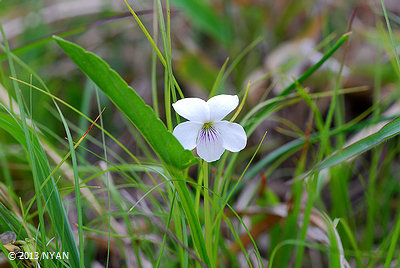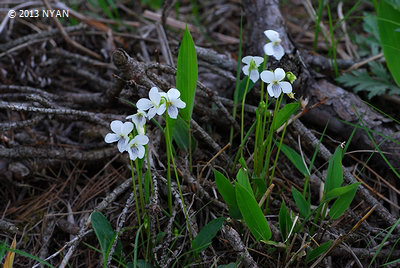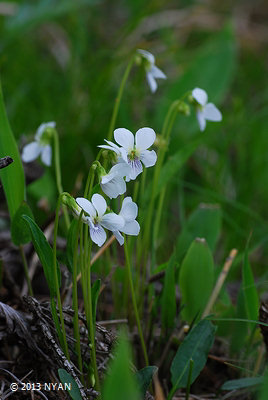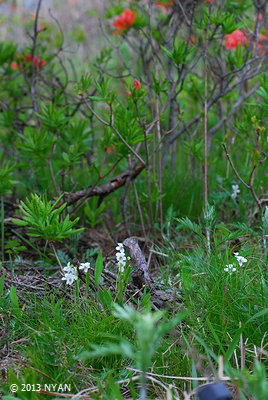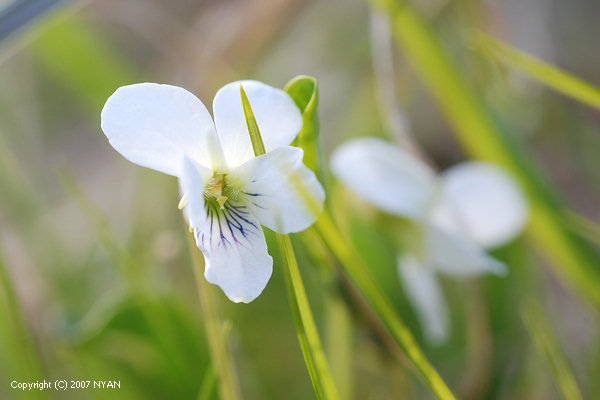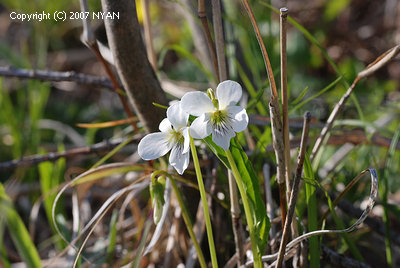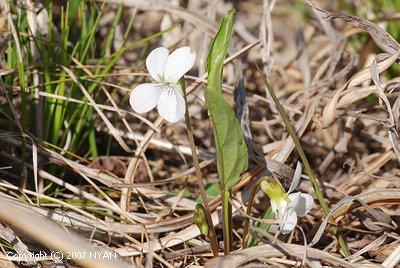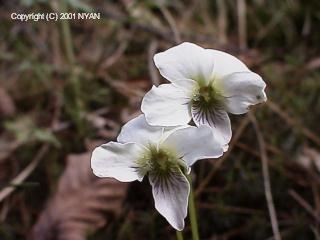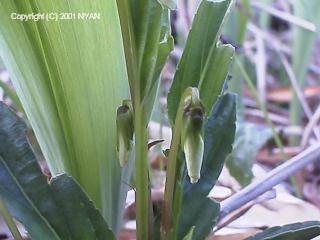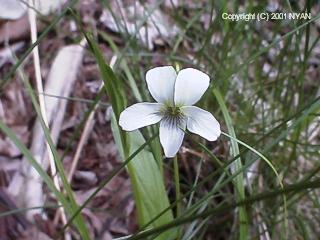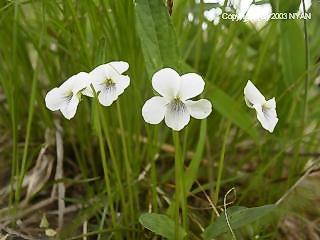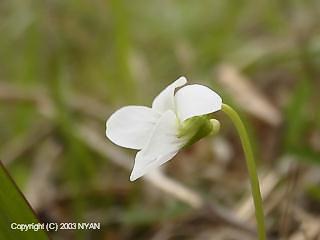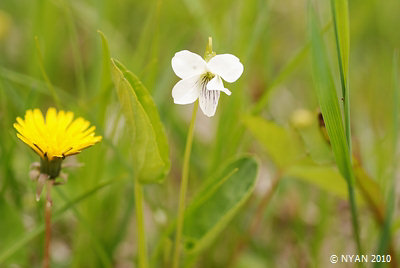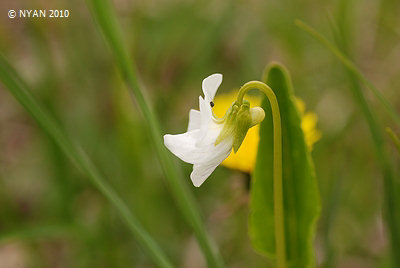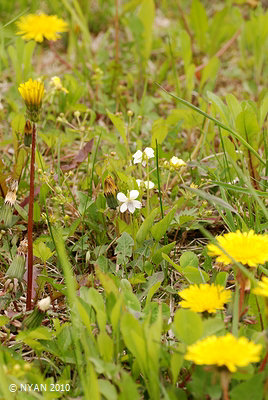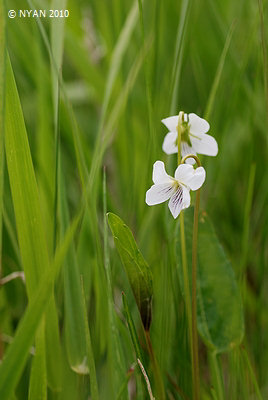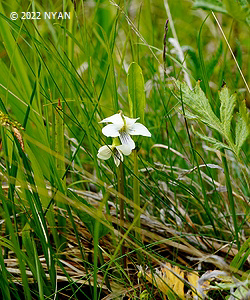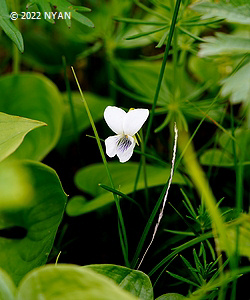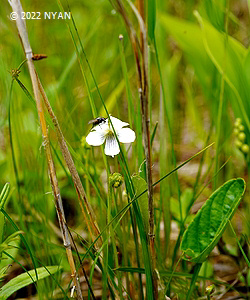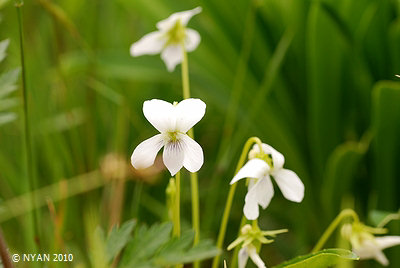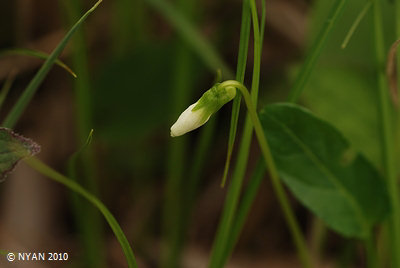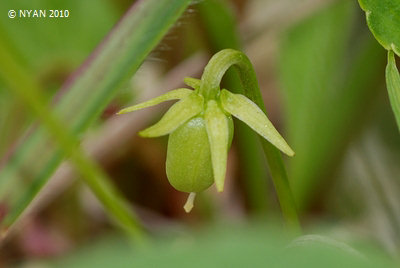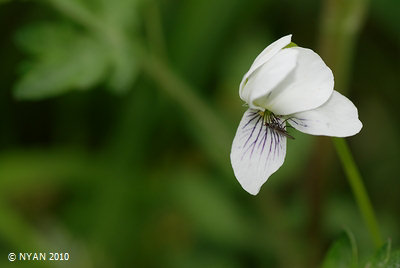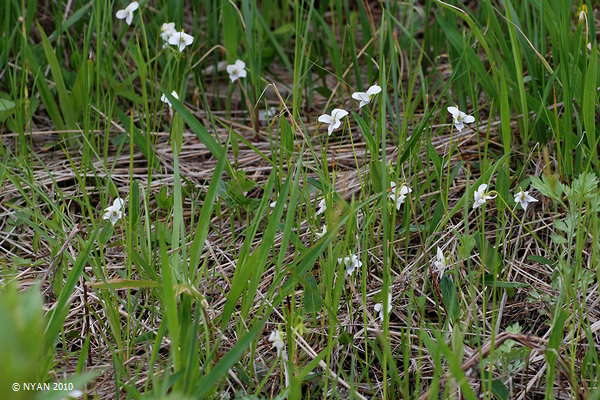| Section | Patellares (Boissier) Nakai | |
|---|---|---|
| Scientific Name | Type species | Viola patrinii Viola patrinii DC. ex Ging. Published in: Prodr. 1:293 (1824) |
| Variety | Viola patrinii var. angustifolia Regel. : {Hosoba Siro Sumire}Published in: Bull. Soc. Imp. Naturalistes Moscou 34(II): 476 (1862) | |
| Form | Viola patrinii f. toyokoroensis Koji Ito : {Toyokoro Sumire}Published in: J. Jap. Bot.,71: 301 (1996) | |
| Synonym |
Viola patrinii f. hispida W.Becker Viola primulifolia var. glabra Nakai |
|
| Origin | patrinii : Originated from a person's name: E. L. M. Patrin, 1742-1814 French plant collector. | |
| Common names | 【Chinese】 白花地丁、白花堇菜 | |
| Stalk Form | The individual leaves and flowering stalks emerge directly from the rootstock. | |
| Habitat | It grows wild in the damp prairie. In Chubu District, it is limited to a plateau with an altitude of 1,000m or more. | |
| Distribution | Japan domestic | The Pacific Ocean side in Hokkaido, Iwate, Chubu District. V. patrinii var. angustifolia grows wild in Shikoku, Kyushu, and the Chugoku district. |
| Japan overseas | East Asia, North Asia, Siberia, Russia. | |
| Others | It is sometimes described as a continental relic plant, a Manseon element. | |
| Flower | Shape | Middle size. The whole impression is similar to Viola betonicifolia var. albescens. The center part resembles Viola yezoensis. Hair of the side valve is conspicuous. |
| Color | "Siro" means white in Japanese. A white petal. A purple article is in a side dialect and the labial palp. | |
| Spur | It is short and white (ittle green). Just like Viola acuminata, it has a stripe stuck together from the left and right. |
|
| Season | Late blooming (May - June). | |
| Stigma | Inverse triangle shape. It resembles the shape of a mantis head. | |
| Aromatic | ||
| Others | Calyx is lanceolate, blunt head. The upper valve tends to gently warp. In rare cases, the side valve has no hair. | |
| Leaf | Shape |
A long, round lancet arch. Long and round lanceolate shape, blunt head. The base is shallow heart shape or truncated. Serration is extremely low. Leaf blade is shorter than petiole. It tends to stand upright. It has petiole wing just like Viola mandshurica. |
| Color | Generally both sides are green. | |
| Others | Rarely there are white fur on the veins. As of Viola betonicifolia var. albescens, leaves are shaped like a halberd. | |
| Seed | Shape | |
| Color | ||
| Others | ||
| Characteristics of roots | Brown. | |
| Endangered Information |
Viola patrinii: Yamagata:ThreatenedⅠ, Fukushima:Near Threatened(NT), Tokyo:ThreatenedⅠ, Aichi:ThreatenedⅠ, Gifu:ThreatenedⅠ Viola patrinii var. angustifolia: Hyougo:ThreatenedⅡ, Wakayama:ThreatenedⅠ, Hiroshima:ThreatenedⅠ, Yamaguchi:ThreatenedⅡ, Tokushima:ThreatenedⅠ, Kochi:ThreatenedⅠ, Aichi:Near Threatened(NT), Fukuoka:ThreatenedⅠ, Oita:Near Threatened(NT), Saga:Extinct(EX) |
|
| Type Specimen | Viola patrinii:Siberia., f. toyokoroensis: Lake Tyoubusi | |
| Chromosome Number | 2n=24 (Nishikawa, T., 1986, Journal of Hokkaido University of Education : Section IIB) | |
| Reference Information | ||
| Others |
Leucism : Toyokoro Sumire (Originated from a area name in Hokkaido). Hairless : Viola patrinii f. glabra (Nakai) F.Maek. (Non-Certified), Frosted hair : Viola patrinii f. prunellifolia Maxim. (Non-Certified) |
|


